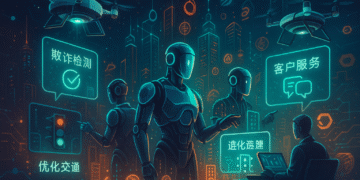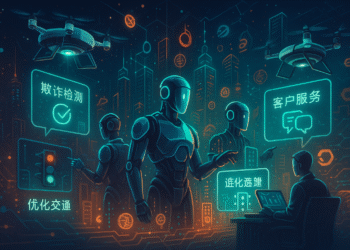The development of artificial intelligence has long been centered around text-based interactions, with early systems such as ELIZA (1966) and AIML-based chatbots of the early 2000s operating within pre-programmed, rule-based frameworks. These early systems, while groundbreaking for their time, lacked the ability to engage in dynamic or meaningful conversation. The arrival of GPT-3 in 2020 introduced AI systems capable of producing coherent, contextually relevant dialogue, marking a significant leap forward. However, until recently, AI remained largely confined to written exchanges, unable to replicate the multifaceted nature of human communication.
OpenAI’s latest breakthrough represents a fundamental shift in AI’s trajectory. The introduction of real-time voice conversations and image recognition in ChatGPT signifies a move toward a more holistic, human-like AI assistant. Users can now engage in seamless spoken conversations and share visual data with the AI, further reducing the barriers between humans and machines. This raises both opportunities and challenges: on one hand, AI is evolving into a true companion, capable of assisting in everyday life in a more natural and accessible way; on the other, this advancement presents ethical and psychological dilemmas regarding AI’s place in human interactions.
The Historical Evolution of AI Assistants
To appreciate the significance of OpenAI’s latest update, it is crucial to examine how AI-driven assistants have evolved over time. ELIZA, developed at MIT in the 1960s, used basic pattern-matching techniques to simulate a therapist, but it lacked true understanding. Decades later, virtual assistants such as Apple’s Siri (2011), Microsoft’s Cortana (2014), and Amazon’s Alexa (2014) enabled voice interactions, though these were largely command-driven rather than conversational. These assistants functioned as responsive tools rather than dynamic dialogue partners.
The release of GPT-3 in 2020 was a game-changer, as it demonstrated AI’s ability to produce nuanced, contextually aware conversations. GPT-4 further refined these capabilities by improving memory retention and contextual comprehension, making interactions feel more fluid and personalized. Now, in 2024, OpenAI has integrated real-time voice and vision capabilities, breaking the final barriers to human-like interaction. These advancements raise critical questions about the implications of AI as a conversational entity capable of interpreting spoken and visual input in real time.
The Mechanics of ChatGPT’s Voice and Vision Capabilities
Unlike conventional voice assistants, which rely on predefined commands, ChatGPT’s voice functionality allows for natural, free-flowing conversations. The AI can adjust its tone, pause and resume conversations, and even recognize subtle emotional cues. This creates a much more immersive experience, with potential applications spanning numerous fields. Language learners can practice pronunciation with real-time feedback, content creators can engage AI co-hosts for podcasts, and hands-free AI copilots could revolutionize in-car navigation and assistance.
Meanwhile, ChatGPT’s ability to interpret images introduces a new dimension to AI assistance. Users can upload screenshots, documents, or photos of objects, and the AI can analyze the content, offering relevant insights. This opens the door to expanded roles in accessibility, customer support, and even healthcare. For instance, AI can assist visually impaired individuals by describing surroundings in real time or offer step-by-step guidance for troubleshooting technical issues.
Real-World Applications of AI Companions
The integration of real-time voice and vision capabilities has already begun reshaping industries. In education, AI-powered tutors are revolutionizing language learning, offering personalized pronunciation feedback and conversational practice. Duolingo and other language platforms are experimenting with AI-driven tutors to create immersive learning experiences.
In the customer service sector, businesses are increasingly employing AI voice assistants to handle complex customer interactions, reducing wait times and improving service efficiency. Financial institutions, too, are using AI-powered advisors to provide real-time investment insights and financial planning assistance. In healthcare, AI’s ability to interpret visual and spoken descriptions is being tested for applications ranging from preliminary diagnoses to assisting medical professionals in patient care.
While these innovations promise to enhance efficiency and accessibility, they also introduce complex ethical dilemmas. The more AI mimics human interaction, the greater the concerns about its role in personal and professional environments.
The Ethical Concerns of AI Companions
As AI becomes increasingly sophisticated, concerns surrounding its ethical implications are mounting. One of the most pressing issues is the risk of AI-generated deepfakes and voice manipulation. With ChatGPT’s advanced voice replication, the potential for malicious misuse—such as identity fraud, misinformation, and deception—becomes a legitimate concern. Policymakers and AI developers must establish safeguards to prevent the exploitation of AI-driven voice synthesis.
Another fundamental question is whether AI companionship could negatively impact human relationships. Some researchers, such as MIT sociologist Sherry Turkle, argue that emotionally engaging AI could erode social skills, leading individuals to form attachments to artificial entities rather than human connections. While AI companionship may provide comfort to those experiencing loneliness or isolation, there is a risk that it could replace, rather than supplement, real human relationships.
Additionally, issues of bias and misinformation remain critical challenges. AI, despite its sophistication, is still prone to generating responses based on biased training data or misinterpreting complex real-world situations. Ensuring that AI provides accurate, fair, and ethical interactions will be paramount in determining its long-term viability.
The Future of AI in Human Communication
As AI continues to advance, we are on the cusp of a reality where AI-powered personal assistants can recall past conversations, adapt to individual preferences, and offer increasingly human-like companionship. The entertainment industry is already exploring AI-driven virtual influencers and AI-generated voiceovers for audiobooks, films, and social media content. Meanwhile, AI’s potential in personal development is vast—interactive storytelling, AI-assisted training programs, and digital memory aids could redefine how we learn and engage with technology.
However, with these developments come regulatory considerations. Governments and international organizations are closely monitoring AI’s evolution, with frameworks such as the EU AI Act and the US AI Bill of Rights seeking to establish ethical guidelines for AI deployment. Striking the right balance between innovation and oversight will be key to ensuring that AI remains a beneficial tool rather than a disruptive force.
Final Considerations: The Path Forward
The introduction of real-time voice and vision in ChatGPT marks a significant milestone in AI’s evolution. No longer confined to text-based exchanges, AI is now capable of engaging in multi-sensory interactions, bringing it closer to the realm of genuine companionship. While the benefits of this advancement are vast—ranging from enhanced learning experiences to improved accessibility—it also prompts critical discussions about privacy, ethics, and the nature of human connection.
As society grapples with these questions, one thing is certain: AI’s role in communication and daily life is only just beginning. Whether AI companionship will be a helpful tool or lead to overreliance remains an open debate. With continued advancements, careful regulation, and ethical considerations, AI has the potential to enrich human interactions while maintaining its role as a supportive, rather than substitutive, presence in our lives.
















Its global delivery routes mirror contingency supply chains mapped by defense logistics planners.